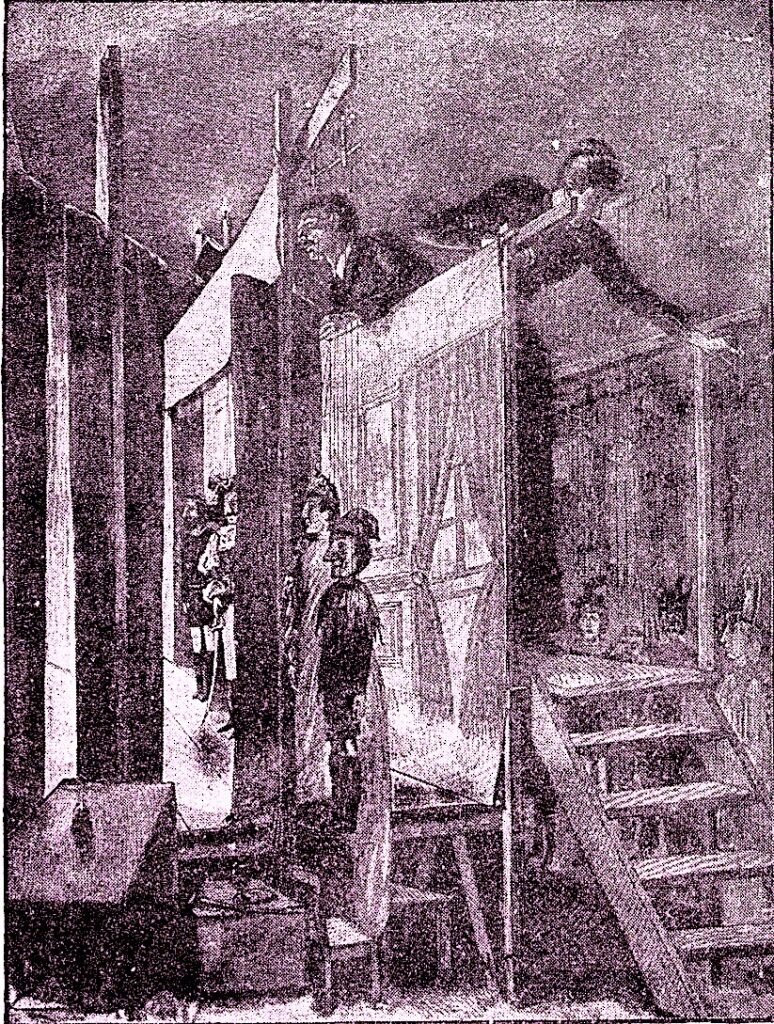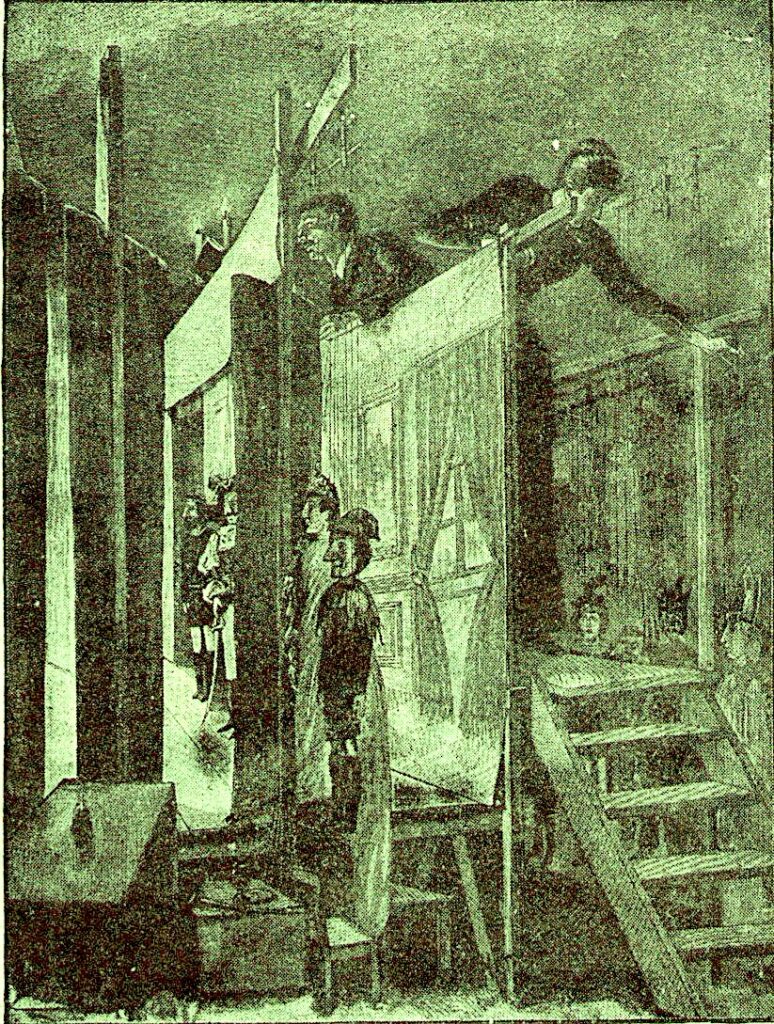Con todo lo brillante que fue esta mujer, en esta semblanza que aparece en la WEPA, su nombre siempre aparece en paralelo con el de artistas varones, ¿acaso para validar su importancia? me refiero a la de Signorelli, por supuesto. Signorelli fue coleccionista, diseñadora y realizadora de escenografías y títeres, en 1947 fundó su propia compañía y en 1972 tuvo su propia cátedra sobre títeres en la Universidad en la Universidad de Bolonia.
As brilliant as this woman was, in this profile that appears in WEPA, her name always appears in parallel with that of male artists, perhaps to validate her importance? I mean Signorelli’s, of course. Signorelli was a collector, designer and maker of sets and puppets, in 1947 she founded her own company and in 1972 she had her own chair on puppets at the University of Bologna.

Es autora de Storia e tecnica del teatro delle ombre (Historia y técnica del teatro de sombras, 1981), Il gioco del burattinaio (El juego del titiritero, 1975) y Srumenti musicali fatti in casa (Instrumentos musicales hechos con la casa, 1977) , entre otros libros.
Titiritera, autora y profesora italiana. Maria Signorelli es la mayor de las tres hijas de la letona Olga Resnevitch, escritora y una de las primeras médicas de Europa, y de Angelo Signorelli, uno de los primeros radiólogos italianos. Desde su más tierna infancia, María se mostró sensible a la riqueza cultural de su círculo familiar: su padre y especialmente su madre (amante del teatro, autora de una biografía de Eleonora Duse), les celebraron durante muchos años un salón en Roma.
Tras estudios clásicos y artísticos, frecuentó el escenario y el taller de vestuario del Teatro Reale, dirigido en ese momento por el pintor ruso Nicola Benois. Su pasión por el dibujo, los colores y el teatro llevó a Maria Signorelli a realizar sus primeros títeres utilizando diversos materiales y objetos rescatados. Estos se exhibieron por primera vez en 1929 en la galería romana Casa d’Arte del director Anton Giulio Bragaglia. Después de otra exposición, presentada por Giorgio De Chirico en la galería Zak de París, se fue a Berlín para una larga estancia que culminó con una nueva exposición, en la galería Gurlitt. A su regreso a Italia, trabajó con Bragaglia en numerosas representaciones teatrales que se realizaron en Roma en el Teatro degli Indipendenti y, más tarde, en el Teatro delle Arti. En 1934 imaginó con Carlo Rende el Pluriscenio M, un escenario diseñado para permitir la presentación simultánea de siete decorados diferentes. Este invento despertó la admiración de Bragaglia y los elogios del fundador del futurismo, Filippo Tommaso Marinetti.

En 1937, la cantante suiza Maria Amstad sugirió sus primeros espectáculos de títeres, La Boîte à joujoux (basado en el ballet para niños de Claude Debussy) y Bastien et Bastienne (basado en la ópera cómica en un acto de Wolfgang Amadeus Mozart), que fueron puesta en escena en Roma. En 1939 se casó con el educador Luigi Volpicelli.
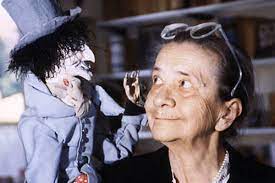
Aunque muy activa como escenógrafa y diseñadora de vestuario durante este período, fue solo después de la guerra, en 1947, que Maria Signorelli fundó su propia compañía, la Opera dei Burattini. Sus producciones se sucedieron, entonces, a un ritmo acelerado y atrajeron la colaboración de artistas a la vista, en particular Lina Wertmüller, Gabriele Ferzetti y Scilla Brini (actores), Enrico Prampolini, Ruggero Savinio y Toti Scialoja (pintores y escenógrafos), Ennio Porrini, Vieri Tosatti y Roman Vlad (compositores), Margherita Wallmann y Giuseppe De Martino (directores). Poco a poco se fue conformando un repertorio, tanto para adultos atraídos por puestas en escena maravillosamente poéticas, como para niños, a quienes los títeres les revelaron todo un mundo fabuloso -e instructivo-. Grandes textos literarios inspiraron sus principales espectáculos: Il re cervo (El rey ciervo) de Carlo Gozzi y El ruiseñor y la rosa de Oscar Wilde en 1952; La historia del pececito de colores de Alexander Pushkin en 1953; La Tempestad de William Shakespeare en 1955; Fausto de Guido Bonneschk en 1963-1964;El infierno de Dante en 1982; La Revolución Francesa de Guido Ceronetti en 1983; Antígona de Bertolt Brecht en 1984.
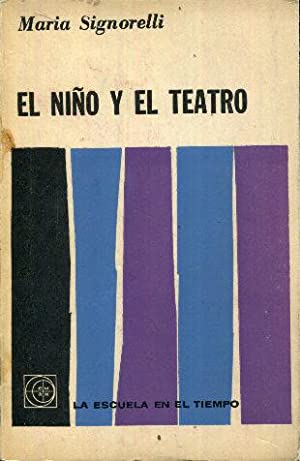
Paralelamente a su trabajo para la escena, se comprometió a transmitir la tradición y, en 1972, ocupó una cátedra, diseñada para ella, de enseñanza de títeres en la Universidad de Bolonia. También creó programas de radio y televisión, dio conferencias, escribió artículos para revistas académicas y publicaciones educativas. Es autora de Storia e tecnica del teatro delle ombre (Historia y técnica del teatro de sombras, 1981), Il gioco del burattinaio (El juego del titiritero, 1975) y Srumenti musicali fatti in casa (Instrumentos musicales hechos con la casa, 1977) , entre otros libros.
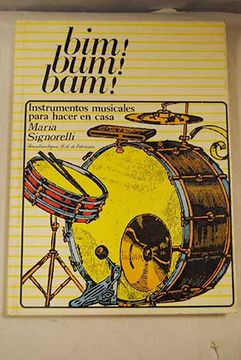
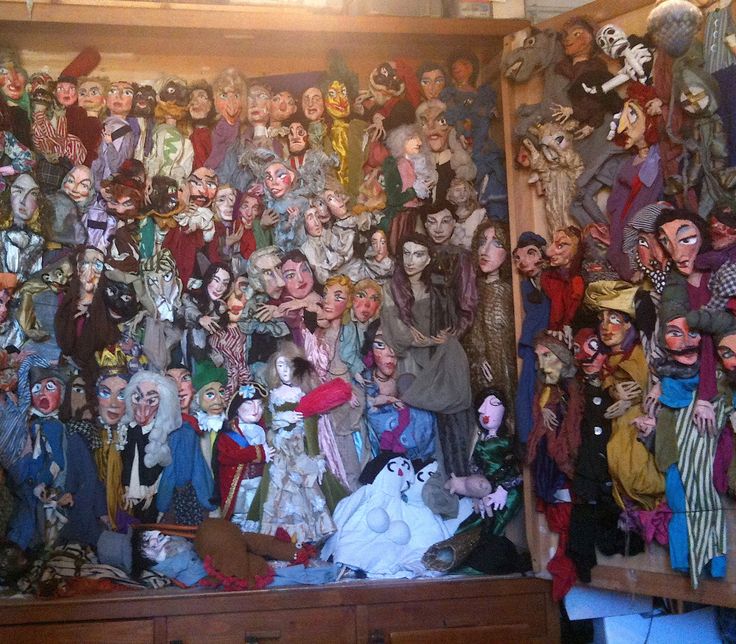
Sus ballets para títeres –El Retablo de Maese Pedro (Le Retable de Maître Pierre, 1951) de Manuel de Falla , La Boîte à Joujoux (1954) de Claude Debussy, Cendrillon (1972) de Serge Prokoviev– le permitieron desplegar su talento y su creatividad como animadora o constructora de figuras, a veces muy sencillas, a veces sofisticadas.
Su pasión por el coleccionismo está en el origen de numerosas exposiciones sobre el teatro de marionetas a lo largo de los siglos, en Italia y en el extranjero. Dirigió la edición de Una vita di teatro tra marionette e burattini , catálogo de la exposición, 1983. Asimismo, sus propias creaciones fueron expuestas en todo el mundo.
Fue miembro del Consejo Mundial de UNIMA y fundó UNIMA-Italia (1980), de la que fue presidenta de honor durante mucho tiempo
Translation by Google
She is the author of Storia e tecnica del Teatro delle Ombre (History and Technique of Shadow Theatre, 1981), Il gioco del burattinaio (The Puppeteer’s Game, 1975) and Srumenti musicali fatti in casa (Musical Instruments Made with the House, 1977). , among other books.
Italian puppeteer, author and teacher. Maria Signorelli is the eldest of the three daughters of the Latvian Olga Resnevitch, a writer and one of the first doctors in Europe, and Angelo Signorelli, one of the first Italian radiologists. From her earliest childhood, María was sensitive to the cultural richness of her family circle: her father and especially her mother (a lover of the theater, author of a biography of Eleonora Duse), held a salon for them in Rome for many years.
After classical and artistic studies, she frequented the stage and costume workshop of the Teatro Reale, directed at that time by the Russian painter Nicola Benois. Her passion for drawing, colors and theater led Maria Signorelli to make her first puppets using various materials and rescued objects. These were first exhibited in 1929 in the Roman gallery Casa d’Arte by director Anton Giulio Bragaglia. After another exhibition, presented by Giorgio De Chirico at the Zak gallery in Paris, she went to Berlin for a long stay that culminated with a new exhibition, at the Gurlitt gallery. Upon her return to Italy, she worked with Bragaglia in numerous theatrical performances that were performed in Rome at the Teatro degli Indipendenti and, later, at the Teatro delle Arti. In 1934 she imagined with Carlo Rende the Pluriscenio M, a stage designed to allow the simultaneous presentation of seven different sets. This invention aroused the admiration of Bragaglia and the praise of the founder of futurism, Filippo Tommaso Marinetti.

In 1937, the Swiss singer Maria Amstad suggested her first puppet shows, La Boîte à joujoux (based on the children’s ballet by Claude Debussy) and Bastien et Bastienne (based on the one-act comic opera by Wolfgang Amadeus Mozart), which They were staged in Rome. In 1939 she married the educator Luigi Volpicelli.

Although very active as a set and costume designer during this period, it was only after the war, in 1947, that Maria Signorelli founded her own company, the Opera dei Burattini. Their productions followed one another at an accelerated pace and attracted the collaboration of prominent artists, in particular Lina Wertmüller, Gabriele Ferzetti and Scilla Brini (actors), Enrico Prampolini, Ruggero Savinio and Toti Scialoja (painters and set designers), Ennio Porrini, Vieri Tosatti and Roman Vlad (composers), Margherita Wallmann and Giuseppe De Martino (directors). Little by little, a repertoire was formed, both for adults attracted by wonderfully poetic staging, and for children, to whom the puppets revealed a whole fabulous – and instructive – world. Great literary texts inspired her main shows: Il re cervo (The Deer King) by Carlo Gozzi and The Nightingale and the Rose by Oscar Wilde in 1952; The Story of the Goldfish by Alexander Pushkin in 1953; The Tempest by William Shakespeare in 1955; Faust by Guido Bonneschk in 1963-1964; Dante’s Inferno in 1982; The French Revolution by Guido Ceronetti in 1983; Antigone by Bertolt Brecht in 1984.

Parallel to her work for the stage, she committed herself to transmitting the tradition and, in 1972, she held a chair, designed for her, in teaching puppetry at the University of Bologna. She also created radio and television programs, gave lectures, and wrote articles for academic journals and educational publications. She is the author of Storia e tecnica del Teatro delle Ombre (History and Technique of Shadow Theatre, 1981), Il gioco del burattinaio (The Puppeteer’s Game, 1975) and Srumenti musicali fatti in casa (Musical Instruments Made with the House, 1977). , among other books.

Text
Giuseppina Volpicelli (2012)
Maria Signorelli


